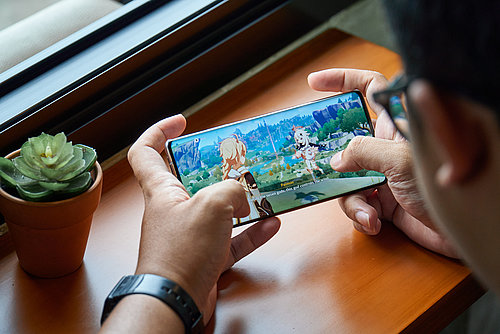
How Smell-O-Vision is making a comeback in cinema
Is Smell-O-Vision making a comeback?

The idea of adding smell to visual content is not new – the first attempt to do so was Scentovision, created by Hans Laube, who tried to introduce smell to cinema screenings. The system that he used involved pipes connected to individual seats in cinemas, through which scents could be passed. The first feature length film was screened with the new feature in 1940 but the idea did not interest any film studios and the technology was not adopted on a wider scale. The technology was revived in the 1960s by Mike Todd Jr, who rebranded it as Smell-o-vision and automated the process. However, the invention was not received well and was associated with large costs. It seemed like it was abandoned all together, even appearing on various rankings of the worst inventions ever.
Surprisingly, adding smell to video is being explored again and companies are inventing new devices to enhance the viewing experience. During the 2023 Consumer Electronics Show (CES), AromaJoin presented their two products that add scent to video – one that is a wearable neckband and one that can be put on a flat surface and connected to devices via Bluetooth. Although the idea is not new, the more advanced technology is. The devices use solid dry material that dissipates quickly, allowing for quick changes in scents and making the scent noticeable only to the user. There are cartridges with many smells available from hot apple pie to fishy water and gunpowder. The company also makes custom scents for companies upon request. I can see how such technology could be a great marketing tool if it was adopted on a wide scale, especially for products for which scent is central such as perfume or food.
Another company, OVR has presented a similar product, called ION3, that can be used either as an attachment to a VR set or as a headset on its own. The company is taking a different approach and rather than having many different scents, developed one cartridge with 8 different aromas that are mixed to create a large variety of distinct scents. The company has launched a mobile app in which users can engage with existing scent-enabled content and customise scents by mixing the 8 aromas in the cartridge in different proportions. The scents are not exactly the same as in the real world but can still add a new dimension to content. I personally like the idea of one cartridge and think it makes the device more likely to be used by individuals, rather than just big companies because it can produce many different scents without the need to purchase various individual products and the interactive nature of the app is likely to make it fun to play with. The founder of the device, Aaron Wisniewski, emphasises the great variety of industries in which it could be used - “We are entering an era in which extended reality will drive commerce, entertainment, education, social connection, and wellbeing. The quality of these experiences will be measured by how immersive and emotionally engaging they are. Scent imbues them with unmatched power.”
Some entertainment companies have been experimenting with scents for a while now. Walt Disney, use “smellitizers" in their Disney World resorts to enhance attractions. The amusement parks also show short films such as “It’s Tough To Be a Bug!” featuring an unpleasant odour when a stink bug is shown on the screen or “Mickey's PhilharMagic”, involving a scent of a freshly baked pie, are shown. Cinemas have also been experimenting with this format for quite a while – 4DX films witch scent features have been introduced in 2009. Given the lack of popularity of 4DX cinema, the public might not be interested in introducing scent to mainstream TV, just like 3D technology in TVs has failed. On the other hand, as VR grows in popularity, people might be interested in experiences that are even more immersive and scent could be the next step.
It will be interesting to see how scent technology will be adopted by different industries and whether it will be as successful as the introduction of sound in film or miserably fail like 3D TVs. I suspect that ION3 could be taken up by the public better because of the personalisation feature and needing just one cartridge and AromaJoin might be used by businesses that want personalised scents for advertising purposes. However, these are just speculations and only time will tell if the technology will be used on a wider scale.


